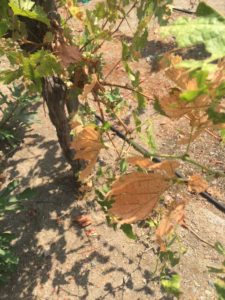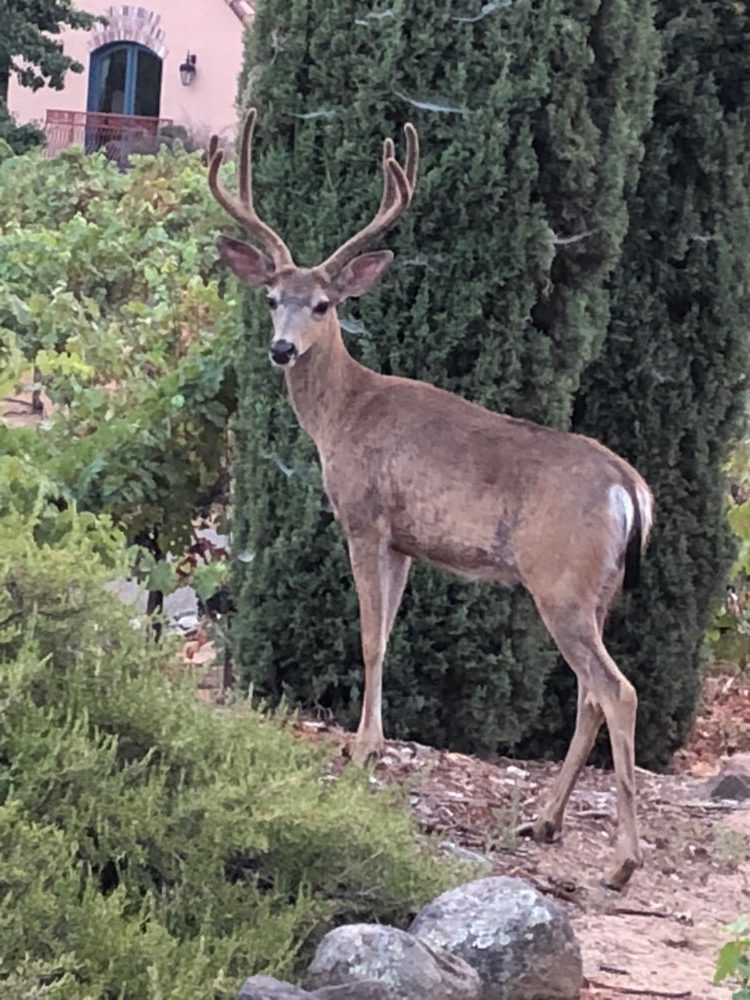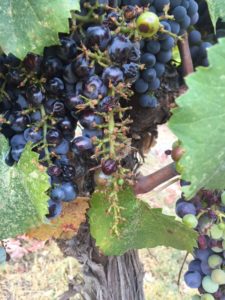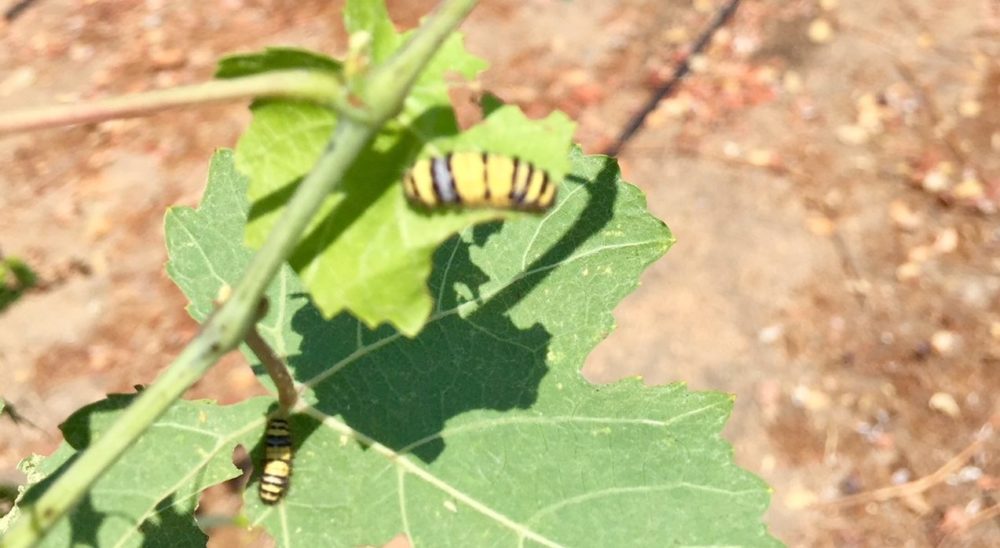Today we’re talking about vineyard pests. A new one I recently encountered is the cute little yellow and black caterpillar in the featured image. You might think this little fella might have earned a name like the bumble-bee caterpillar or something like that until you see the sort of damage this guy and his friends can do to a grape vine:

Western Grape Leaf Skeletonizer damage
The Western Grape Leaf Skeletonizer is the perfect name for this pest. He and his friends can decimate vines leaving them “skeletonized”. We found these after one of the homeowners reported that a group of these had decimated their table grapes, and the voracious little beasties had moved on to the neighboring Petit Verdot. The caterpillar version is the larval version of a moth which is how they spread.
Spraying with Spinosad or Bt (Bacillus thuringiensis) works if there are young caterpillars and is not too disruptive.
For the long term it is recommended to try and spread the granulosis virus among them. The virus is specific to caterpillars, and keeps them in check in most of California. The instructions we received for this process are:
Collect caterpillars, particularly those acting sick (see IPM guidelines for description of symptoms). Wear gloves to collect into small buckets. Get a cheap blender (or a small blender jar & blade that will only be used for this), grind them up in a small amount of water, then spray on vines with active young caterpillars. It should pass the virus on, and minimize the problem in the future. The preparation may be frozen to be used later.
Sounds delicious doesn’t it?
Deer – A somewhat larger pest

Beautiful, graceful, so innocent looking, but deer can do a lot of damage to a wine grape crop. The first way they cause damage is by grazing on tender leaves and shoots before they have a chance to grow. Once the shoots are grown the deer still like to graze on some of the leaves, which cuts down on the amount of energy the vine produces. Early on the deer won’t touch the fruit. They have uncanny noses and know the fruit isn’t ripe. After veraison they sometimes begin to test the fruit nibbling and cause some of the damage shown below:

Once the crop ripens a few deer can come in and wipe out entire rows of grapes if they are hungry.
To keep the deer out, most growers will use 8-9 ft deer fencing. The deer here are capable of leaping that high and clearing the fence, but they will only do so if they are under extreme duress and trying to get away from something, otherwise there is enough other forage that they won’t bother.
Clos du Lac has perimeter fencing designed to keep the deer out, but unfortunately they have other ways to get in. Occasionally vandals will cut the fencing leaving a gap for the deer, more often a deer will wait by the front gates for a car to drive in, and will slip in before the gate closes. In some cases the deer will even go under the fence if the coyotes have dug a big enough hole for them to try and fit through.
Once the deer get into Clos du Lac, if can bee a bit challenging to get them out because there are so many places they can hide. Our solution is to conduct “Deer Drives”
Deer drives aren’t quite as exciting as they might sound. They aren’t like cattle drives or even herding sheep, maybe a bit more like herding cats. The deer don’t like getting too close to people, so what we do is just walk slowly though the areas they like to hang out, and the deer will move off. If you position “Blockers”, people who stand in an area and make themselves visible, the deer won’t go that way, they will instead pick another route – particularly if it is a route they normally follow. If you move too suddenly and startle them, they will use their primary defense which is to run like mad and jump over anything in their way. When they are panic, they just run almost blindly, and trust me, you do not want to be in front of a deer running at full tilt – not even a small one.
The objective of a deer drive, then, is to slowly and unthreateningly walk and herd the deer toward an open gateway that looks nice a safe. Easier said than done, but short of getting a depredation permit it’s the most effective way of getting them off the property.

Leave a Reply
You must be logged in to post a comment.